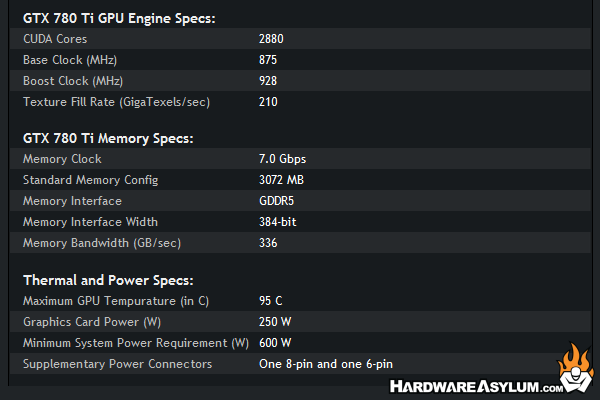Raijintek Morpheus VGA Cooler Review
Author: Dennis GarciaBenchmarks
The Raijintek Morpheus is designed for AMD R9 / HD78xx series and NVIDIA GTX 6xx / GTX 7xx series GPUs. Here is an overview of the system and testing methodology.
Gigabyte GA-X99-SOC - X99 Chipset
Intel Core i7 5960x (3.0Ghz) Octo Core 8 x 256KB L2 Cache 20MB L3 Cache
MSI GTX 780Ti Lighting MOA Edition
Raijintek Morpheus
2x generic 120mm x 25mm case fans
The MSI Afterburner Software was used to obtain and record system temperature data. We will be using the HWBOT Unigine Heaven benchmark for load testing and will be recoding maximum temperature when the benchmark has finished.

Editors note: Even though MSI Afterburner reported 100% processor usage we could never attain a 100% of the rated heat output as documented by NVIDIA. Knowing this we ran the stress test multiple times to obtain a maximum temperature.
Other things to consider when judging software induced heat output.
a) Clock throttling by the processor at high temperatures.
b) Normal software isn't designed to produce maximum heat output.
c) Variances of cooling temperature.
d) Variances in GPU load.
e) Inaccuracies in thermal diode readouts.
Of course the list goes on..
Our testing methodology is aimed to provide a real world look into this heatsink given the test system provided.
This particular card didn't come with a stock cooler so we are using a Silent fan profile (slow moving fans) and an OC Profile (dual fan high RPM) to illustrate the temperature drop.

C/W = (GPU temp - Ambient temp)/(Variance(%) * GPU Watts)
Allowed variance for this test = 85%
GPU Watts = 250W
0.10 C/W = (44C - 22C)/(.85(250W))
For this next test the GPU speed was cranked up +200 in Afterburner with a resulting boost clock of 1219Mhz. The test was re-run and temps recorded.

ocC/W = dGPU Watts * (ocMhz / dMhz) * (ocVcore / dVcore)2
ocMhz = 1219
dMhz = 928
ocVcore = 1.2
dVcore = 1.2
The variance still applies for our C/W calculation
Allowed variance for this test = 85%
GPU Watts = 328W
0.09 C/W = (47C - 22C)/(.85(328W))
In our heatsink and waterblock tests we don't really focus on overall load temperatures but rather how well the product can remove heat given a specified heat load. Since this is a real world testing method we need to take into consideration real world variables and estimate tolerances. This is why we normally only apply 85% of the total wattage output to our heat calculations.
The resulting C/W number is used to rate how efficient a heatsink or waterblock is based on the given heat load. These numbers can be used to determine heat capacity, the larger the difference the less efficient the heatsink is. (aka not good for overclocking)
Testing a GPU cooler isn't that easy given the variable boost clock however, voltage often remains consistent. For our tests we used MSI Afterburner to overclock the card and record boost clocks and temps. Overall we can easily say that the Raijintek Morpheus went beyond our expectations. In terms of performance the C/W number went down between tests indicating that we haven't reached the thermal barrier and should be able to get more speed from our video card.
Of course performance is largely dependent on what fans you install and if you run them at 100% or run them silent. In our tests the silent option raised core temps to 57 degrees which is well below the 80 degree temperature threshold for boost throttling.
Keep in mind these calculations are provided for demonstration purposes only and may not reflect the actual lab tested C/W rating, but we're pretty close.

